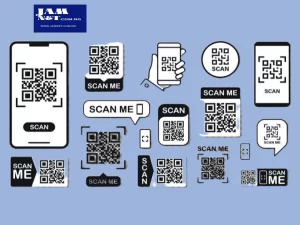The Federal Trade Commission (FTC) issues a cautionary warning about the potential risks of scanning QR codes, emphasizing the vulnerability to identity theft.


QR codes, designed for quick access to links and information using smartphone cameras, have become prevalent in various businesses, from restaurants to retailers. The ease of use for consumers and the valuable insights they provide to businesses, such as linking to loyalty programs, make QR codes widely adopted.

Join our Telegram Channel for Updates
However, the FTC underscores that while these codes enhance convenience and facilitate business operations, they also offer an opportunity for malicious actors to stealthily steal consumers’ personal information.
CHECK: Creating an Effective Business Pitch: 10 Essential Components
Identity theft can have severe financial consequences, leaving victims with limited recourse. Thieves armed with personal information obtained through identity theft can engage in activities like draining bank accounts, making unauthorized credit card charges, opening utility accounts, and even seeking medical treatment using someone else’s health insurance.
The FTC outlines common tactics employed by scammers to exploit QR codes. Fraudsters may place their QR codes in common locations like parking meters, concert venues, public fliers, or bike share racks. They might also send unsolicited QR codes via text message or email. These codes, when scanned, can lead to phishing websites mimicking legitimate ones, tricking users into providing sensitive information. In some cases, scanning a malicious QR code can automatically install malware on the device.
The warning encourages individuals to stay vigilant, especially when encountering QR codes from unknown sources. Scammers may create urgency by claiming an undeliverable package or another urgent matter, prompting individuals to scan the code without due consideration. Recognizing signs of identity theft, such as unexplained bank withdrawals or credit card charges, is crucial for individuals to take prompt action.
The detailed advisory from the FTC serves as a reminder to exercise caution while interacting with QR codes, emphasizing the need for awareness and diligence to mitigate the risks associated with identity theft.
How to prevent QR code ID theft
Preventing QR code identity theft is crucial, and here are some detailed steps to help safeguard your personal information:
1. Scrutinize Before Scanning
– Before scanning any QR, especially if it appears unexpectedly, take a moment to inspect it.
– Look for any misspellings in the URL encoded in the QR code, as this can be an indication of potential fraud or a phishing attempt.
2. Exercise Caution with Unexpected QRs
– If you receive a QR unexpectedly, exercise caution, even if it comes through a seemingly legitimate text or email.
– To verify the authenticity, reach out to the business or sender directly. Use official contact information obtained separately, such as the company’s official website or phone number.
3. Stay Updated
– Regularly update your smartphone’s operating system to ensure you have the latest security features and patches.
– Keep your apps, including the one used for scanning QR codes, up to date to benefit from the latest security enhancements.
4. Use Strong Passwords
– Employ strong, unique passwords for your online accounts. Avoid using easily guessable information and consider using a mix of letters, numbers, and symbols.
– Use a password manager to help you generate and store complex passwords securely.
5. Implement Multi-Factor Authentication (MFA)
– Enable multi-factor authentication for your important accounts. This adds an extra layer of security by requiring additional verification steps beyond just a password.
– MFA ensures that even if your password is compromised, unauthorized access is still thwarted.
By adopting these practices, you can significantly reduce the risk of falling victim to QR-related identity theft. Staying vigilant, verifying sources, and maintaining good security practices contribute to a safer online experience.













